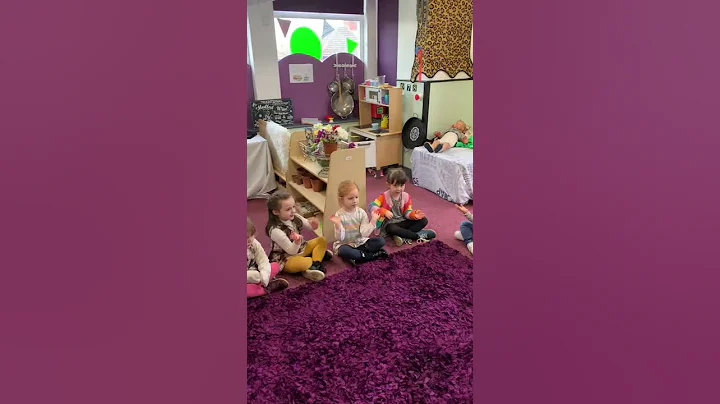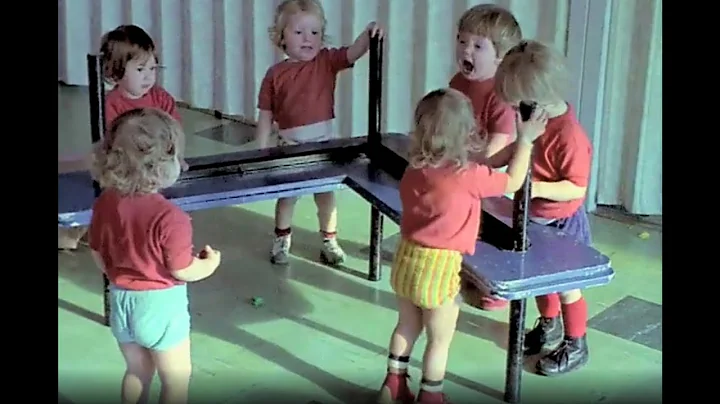After giving birth, many mothers’ bellies are as loose as pockets. The postpartum potbelly cannot be retracted. In addition to a large amount of fat accumulation, it may also be related to the separation of the rectus abdominis muscle.
Postpartum rectus abdominis separation ? I believe many people, even postpartum mothers, will find it strange.
What is postpartum diastasis recti?
The midline of the human abdominal wall is flanked by the longitudinal rectus abdominis . There is a healing line between the left and right rectus abdominis muscles, which is the midline of the anterior abdominal wall. This line is medically called the " abdominal white line ".

Under normal conditions, the middle of the two rows of rectus abdominis muscles is only 1 to 2 fingers wide (a gap of 1 to 3 cm). After pregnancy, as the baby grows day by day, the belly is gradually expanded, coupled with the increase of hormones in the body. The action of the abdominal wall makes the linea alba relax and the connection strength decreases. The two factors are superimposed, causing the tension of the abdominal wall to quickly exceed the elastic limit of the linea alba. As a result, the left and right rectus abdominis muscles are forced to separate, forming rectus abdominis separation.
After giving birth, the rectus abdominis muscles gradually move closer to the middle, and the width of the abdominal linea alba gradually returns to the pre-pregnancy level. This process usually takes half a year to a year.
But for a small number of women, if during pregnancy, the abdominal muscles in the gap are overstretched... exceeding the elastic limit of the abdominal line alba, and as a result, the left and right rectus abdominis muscles are forced to separate, and rectus abdominis separation will occur.
In layman's terms, it means that the belly is stretched out and cannot go back.
So what will be the symptoms if postpartum rectus abdominis separation occurs?
If it has been half a year since you gave birth, but your figure has not recovered, and you are also accompanied by the following conditions, you must pay more attention.
(1) The belly is still bulging and the abdominal wall is loose, which cannot be restored in the long term. This is because the rectus abdominis muscle separation causes the center of the abdomen to be unable to withstand the pressure in the abdominal cavity. When a person stands, the intestines and omentum in the abdomen protrude outward, as if they are still pregnant.
(2) The belly button is bulging, just like umbilical hernia .
(3) When doing sit-ups, you can feel a longitudinal "deep groove" between the rectus abdominis muscles on both sides with your hands.
(4) Back pain and even urine leakage .
How can I know more clearly whether my rectus abdominis muscle is separated?
 . Mother can lie flat on the bed, bend her knees, and relax her abdomen;
. Mother can lie flat on the bed, bend her knees, and relax her abdomen;
 . Put one hand behind the head and the other hand in the middle of the lower abdomen, which is the connection point of the two sets of rectus abdominis muscles;
. Put one hand behind the head and the other hand in the middle of the lower abdomen, which is the connection point of the two sets of rectus abdominis muscles;
 . Gently raise the head first, Then lift your upper body little by little, and let your fingers feel the distance between the abdominal muscles 3-5 cm below the navel;
. Gently raise the head first, Then lift your upper body little by little, and let your fingers feel the distance between the abdominal muscles 3-5 cm below the navel;
. Some people will feel that their fingers sink into the abdominal muscles. If more than two fingers are inserted, it is a separation of the rectus abdominis. .
would like to remind new postpartum mothers not to do general abdominal exercises before the rectus abdominis gap is closed. It is best to check the recovery status of the rectus abdominis separation before doing these exercises.
Otherwise, not only will it not have any effect, it will also easily damage the abdominal muscles and even lead to aggravation of rectus abdominis separation. In severe cases, internal organs may shift, sag, and compress the bladder, causing urinary incontinence.
In short, postpartum recovery is a step-by-step process, and the amount of exercise should be gradually increased. Do not exercise excessively because you are eager to get back in shape.
In addition, in order to reduce the probability and degree of postpartum rectus abdominis separation, women should do more exercises such as sit-ups, plank support and other exercises before pregnancy to enhance the strength of the abdominal wall muscles and the elasticity of the abdominal skin and fascia.
In addition to diastasis of the rectus abdominis, postpartum abdominal obesity in women is also related to abdominal wall muscle and fascia relaxation, abdominal fat accumulation and other reasons.
Although postpartum diastasis recti is relatively common, most postpartum mothers will gradually return to normal after 6-8 months, but many mothers are not so lucky.
So what should you do if the rectus abdominis muscle is separated?
"Abdominal curls" mainly exercise the rectus abdominis muscles. In the case of rectus abdominis separation, "abdominal curls" will aggravate the rectus abdominis separation. In response to this situation, we should focus on training " transversus abdominis ". glute bridge is a recommended training.
▼
Glute bridge exercise
Step 1 Lie on your back, bend your legs at 90° in front of you, and place your hands flat on both sides of your body
Step 2 Lift your buttocks into the air so that your knees, upper body, and head are in a straight line
Step 3 Hold for a few seconds , slowly return to the lying position

▼
Abdominal breathing
Various fitness institutions, coaches, etc. may say that plank support is the best way to exercise the transversus abdominis.
This is not wrong, but if you don’t use your transversus abdominis muscles to breathe, plank support is just a critical blow to the lumbar spine! On the contrary, it will not have the desired effect!
A simpler method than plank support is: use the transversus abdominis muscles to breathe anytime and anywhere, and you can make your belly flat by exercising the transversus abdominis muscles!

What you need to do is to pay attention to your breathing:
 . When inhaling, try to let the air enter the abdomen and feel the feeling of the chest and belly bulging;
. When inhaling, try to let the air enter the abdomen and feel the feeling of the chest and belly bulging;
 . When exhaling, try to breathe out as cleanly as possible, and imagine holding the T-shirt with your hands. Tuck the hem into your pants.
. When exhaling, try to breathe out as cleanly as possible, and imagine holding the T-shirt with your hands. Tuck the hem into your pants.
At this time, you can feel the hardness in your lower abdomen on both sides. If you look in the mirror, you can also see that your belly button is slightly downward.
Of course, you can also do the balloon blowing action, narrow your mouth and exhale forcefully, which can also contract the transversus abdominis.
▼
Rectus abdominis manipulation
Finally, do the rectus abdominis manipulation. The specific operation is to use the heels of both hands to gather the left and right rectus abdominis muscles toward the center, stay for 15-20 seconds, and repeat 3-5 times.
After the manipulation, you can also cooperate with bioelectricity for treatment. The purpose is to improve the nutrition of the rectus abdominis fascia, promote blood circulation, and strengthen its closing ability.
▼
5 sports training
Exercise 1: Standing and abdominal contraction
Step 1 Stand against the wall, maintain a neutral position, with the back of your head, back and buttocks against the wall, and your feet about 30 cm away from the wall
Step 2 Inhale to prepare , exhale and press your lumbar spine against the wall , inhale and restore
Step 3 10-15 times in one group, 2-3 groups
Note: Do not push the wall with your arms, take the initiative to approach the wall with your body, tuck your abdomen in as much as possible, imagine your belly button is approaching the wall,

Exercise 2: Kneeling posture to tuck in Abdomen
Step 1 Kneel at four points, keep the four joints of shoulders, wrists, knees and hips vertical, and keep the spine in a neutral position
Step 2 Inhale and relax the lower abdomen, and force adduction when exhaling
Step 3 10-15 times per group, 2-3 groups
Note: The spine should always remain neutral and only the abdomen should be moved.Imagine sucking your navel to the lumbar spine

Exercise 3: Kneel and stretch your legs
Step 1 Continue to kneel at four points, inhale to prepare.
Step 2 When exhaling, slowly extend your right leg back, inhale without moving, and exhale slowly retract it
Step 3 4 - One set of 6 times, 2-3 sets of each leg
Note: Keep the body in a neutral position, as if there is a book on the pelvis, keep the book from falling

Exercise 4: Lie on your back and raise your legs
Step 1 Lie on your back, chin slightly tucked, hands Hold the front of your right calf, and press your lumbar spine against the mat.
Step 2 Inhale to prepare. When exhaling, stare your right leg into the distance.
Step 3 One set of 6-8 times, 2-3 sets of each leg.
Note: When holding your leg, try your best to Press toward the chest to help the lumbar vertebra press toward the mat. Extend the other leg as far as possible while keeping the lumbar vertebrae from lifting. Exercise 5: Lie on your back and kick your legs. The lumbar spine presses against the mat.
Action execution : Inhale, prepare; exhale, push your right leg farther away, complete 6 to 8 times. Repeat with the other leg to complete 2 to 3 sets.

Note:
Before rectus abdominis training, you must first do a pelvic floor function assessment to clarify the strength and proprioceptive capabilities of the pelvic floor muscles. Based on the specific conditions of the pelvic floor function, consider whether to repair the pelvic floor muscles first or repair the pelvic floor muscles first. The rectus abdominis and pelvic floor repair are performed together to achieve better functional recovery from the perspective of overall pelvic and abdominal dynamic rehabilitation.
The period of 6 weeks to 1 and a half years after delivery is the prime time for recovery. Of course, it doesn’t matter how late it is. Building these muscles is part of fitness. It’s never too late to start.
Finally, the editor would like to say to mothers: While taking care of your little lives, don’t forget to love yourself.
will share it with you today. If it helps you, please share and repost it. If you have any good opinions and suggestions, you can also like and leave a message in the comment area. Thank you for reading.
Source: Newborn Care
If you think this article is helpful to you
please pay attention to "Baby Cloud Platform" Today's Headlines
and "Baby Cloud Platform" "Kangsitian Technology" WeChat public account
to share the latest pregnancy consultation with you every day.
There are many gifts waiting for you


![[Source: Jiangxi Internet Radio and Television Station_Ganzhou Culture and Education] Carry out red education and inherit the red gene. In order to let children understand history and cultivate patriotism, recently, the No. 2 Nursery School of Zhanggong District and the No. 17 Nu - DayDayNews](https://cdn.daydaynews.cc/wp-content/themes/begin/img/loading.gif)









